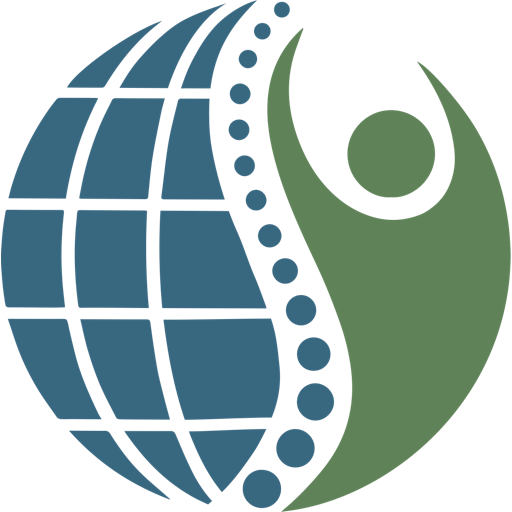Meet Gasebomo: A wife. A nurse. A mother.
We hope to share a story that demonstrates the burden that spinal pain has on women in the community - and how World Spine Care clinics provide critical care to those who need it most.
Spinal disorders, such as low back and neck pain, are the leading cause of disability worldwide. Over one billion individuals are impacted by spinal pain across the globe. Spine conditions have a disproportionately greater impact on women, as well as the poor and the elderly, and can result in poverty or even death through starvation.
Meet Gasebomo
Gasebomo is a mother, a nurse, and a patient of World Spine Care.
Gasebomo is a 36-year old Motswana from Palapye, Botswana. She is a happily married mother of two who helps to support her family by working as a nurse in a local hospital.
For the last 10 years, Gasebomo has suffered from low back pain, but over time, her pain has gotten worse - now the pain has spread to her whole spine, and her legs are swollen.
Eventually, Gasebomo isn’t able to care for herself, her children, or clean the house. She needs help to go to the bathroom, to bathe, to bend over - even to dial the phone.
She has no other family - her parents are gone and her sisters live far away. Gasebomo’s 11 year old son starts to take care of her as best he can.
Gasebomo is unable to work in the hospital and eventually she loses her job. There is no workers' compensation in place, so there is no safety net, but she doesn’t give up. She tries to start a business by making jewelry at home. It is painful and difficult, but she persists. However, she can’t travel to sell her jewelry and struggles to survive.
Desperate to piece her life back together, Gasebomo visits the medical doctors who send her to get a CT scan in Francistown, 250 kilometers away. The CT machine isn’t working properly, so they send her to Princess Marina Hospital, 200 kilometers in the opposite direction.
That CT machine is not working either.
Gasebomo then travels nearly 500 kilometers to a hospital in the neighboring country of South Africa. The CT scan shows a disc bulge in her low back. She tries medication, acupuncture, and physical therapy. It helps a bit, but the pain returns after a week. The doctors order an MRI and then refer her to the World Spine Care clinic in the Mahalapye District Hospital.
“I feel like a person again. I am doing so many things for myself; I even picked up my little boy, and it was nice.”
The Community Burden of Spine Pain
Think about the impact that a patient like Gasebomo has on the community. She doesn’t experience her disability in isolation:
Her employer loses a skilled employee in an area where there is already limited nursing staff;
Her husband and children lose the additional financial and emotional support she provided for the family. They lose companionship and care.
Her children stop going to school because they can no longer afford the tuition. Her spine pain breaks up the family; they're in trouble.
The community in the village now has problems taking care of someone who cannot support herself. The government loses taxes and a valued employee who is supporting her community.
The burden of spinal disorders is not just the patient who walks in the door with back pain and disability. An entire system gets impacted: a family, a community, the government.
Enter World Spine Care
The World Spine Care clinicians take a conservative, evidence-based approach to spine care. After a comprehensive exam, they provide education, manual therapy, and movement recommendations.
After receiving treatment in the clinic for a few weeks, Gasebomo begins to feel whole again. She declares, “God is alive and has a plan for my life. I am now a person. I have improved a lot. I am doing so many things for myself. I even picked up my little boy, and it was nice.”
Gasebomo continues to experience minor, localized pain, but she feels in control. She can work, clean, and cook for herself again. She can sit for a long time.
The community and local government no longer bear the burden of an individual with disability. Her family no longer struggles financially. She is able to care for her children again. Her employer again benefits from a capable employee and the strain on hospital resources is eased.
The Cost of Disability
One billion people in the world have some level of disability due to spinal disorders. This disability contributes more to the global burden of disease than HIV, diabetes, malaria, stroke, Alzheimer’s disease, breast and lung cancer combined, traffic injuries, and lower respiratory infections.
World Spine Care’s vision is a world in which everyone has access to the highest quality spine care possible. Gasebomo’s story is a reminder of just how critical it is for World Spine Clinics to exist, and the fact that our impact goes far beyond the patients that we serve.
We can’t do our good work without your help
Your gift will help to support our global mission to improve lives in under-served communities - not just by addressing spine pain, but by addressing the burden spinal conditions place on families, communities, and governments.
Thank you for your support.
You can do your part to support World Spine Care by donating, volunteering, or spreading the word on Facebook, Instagram, or Twitter.


